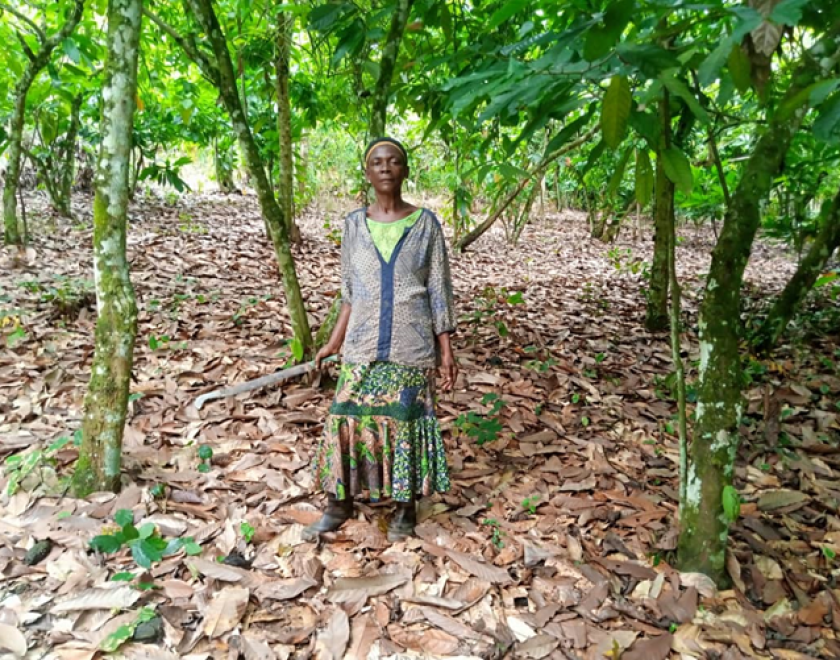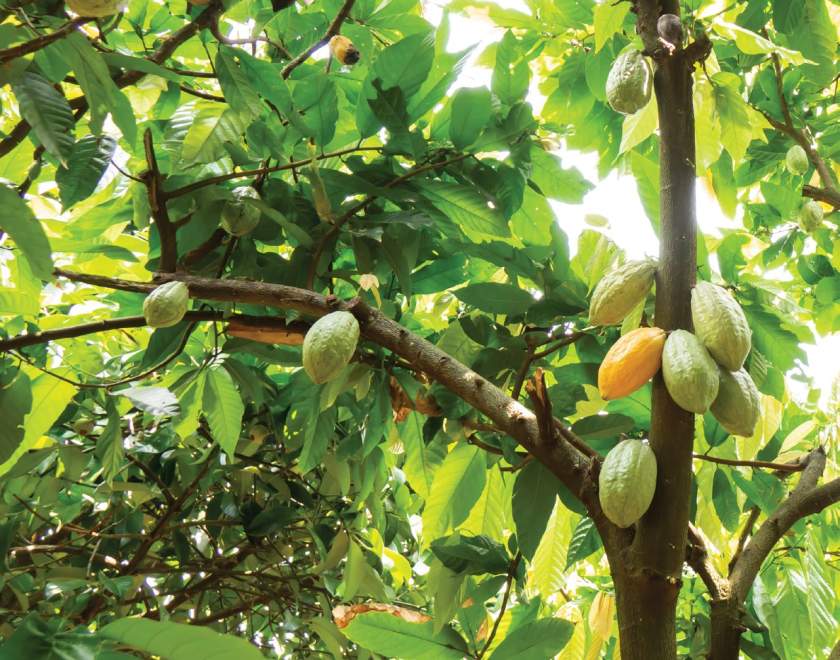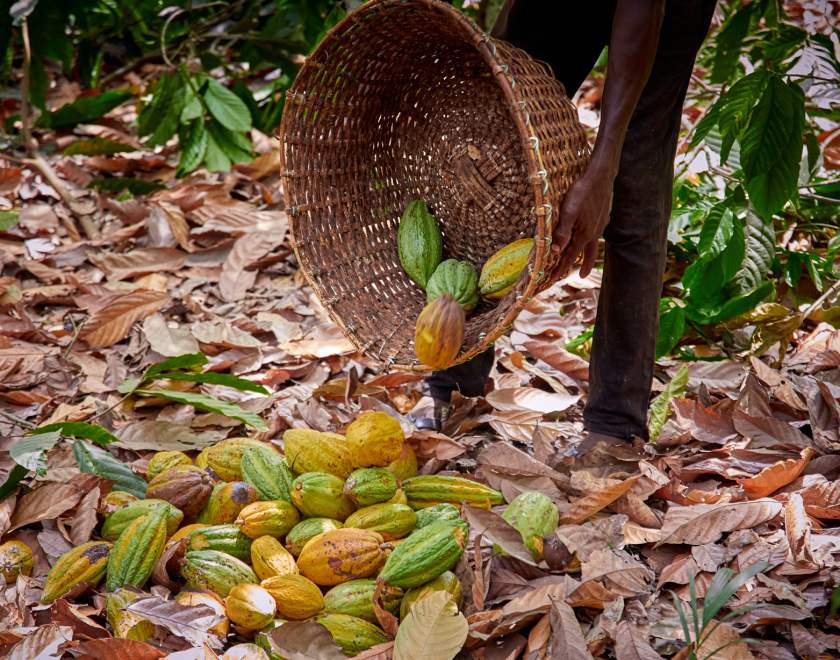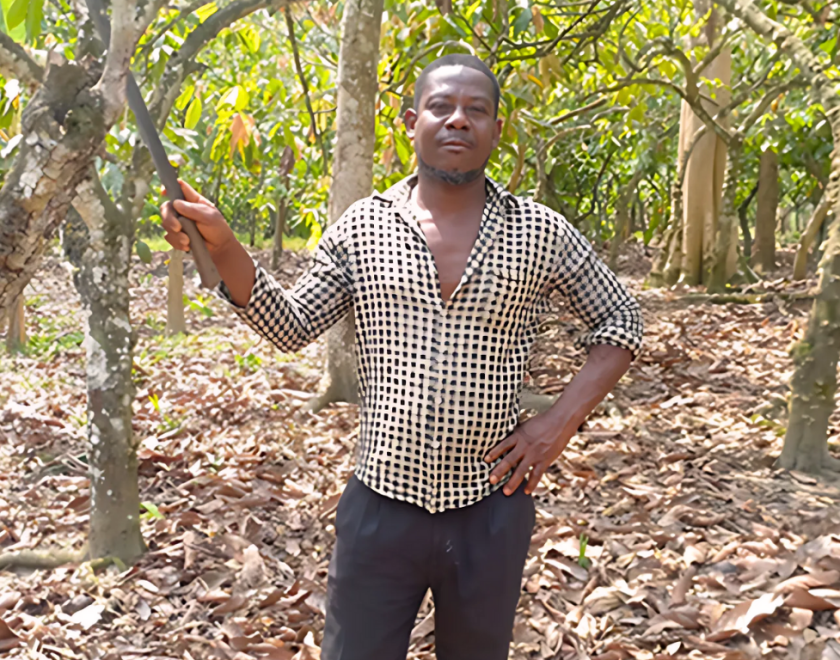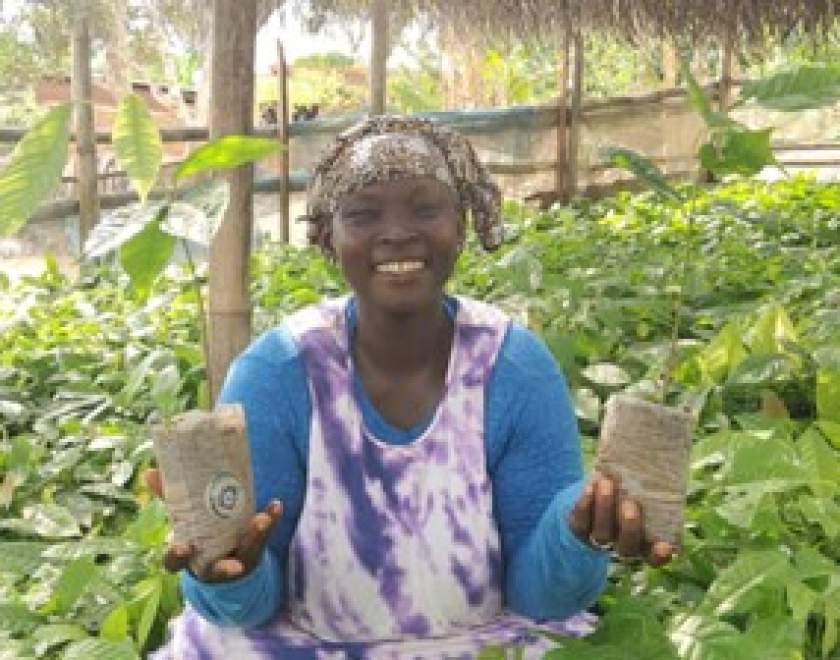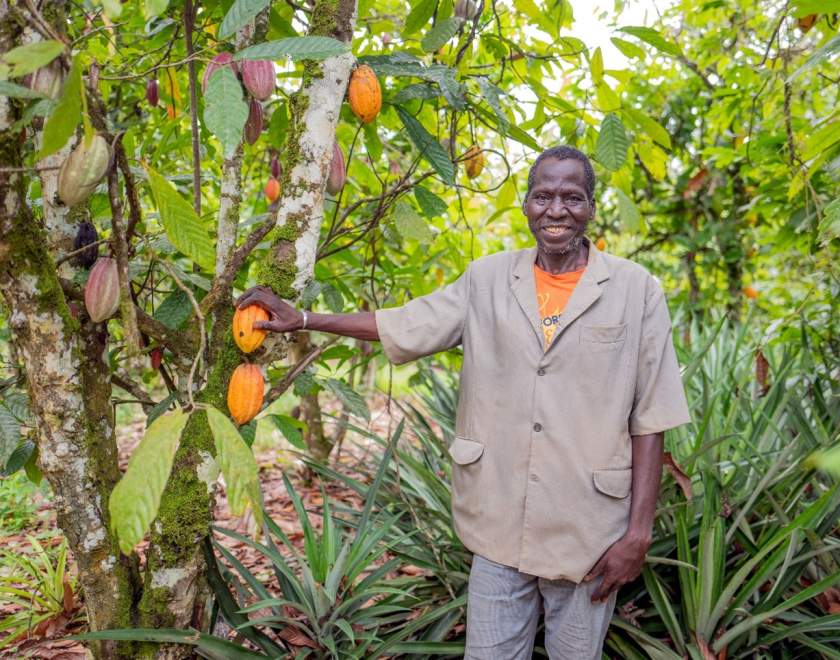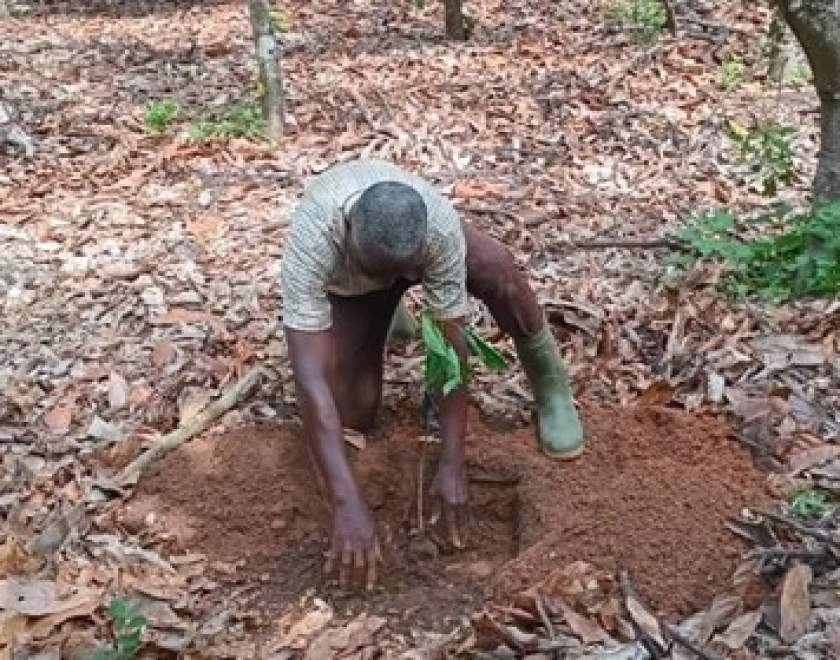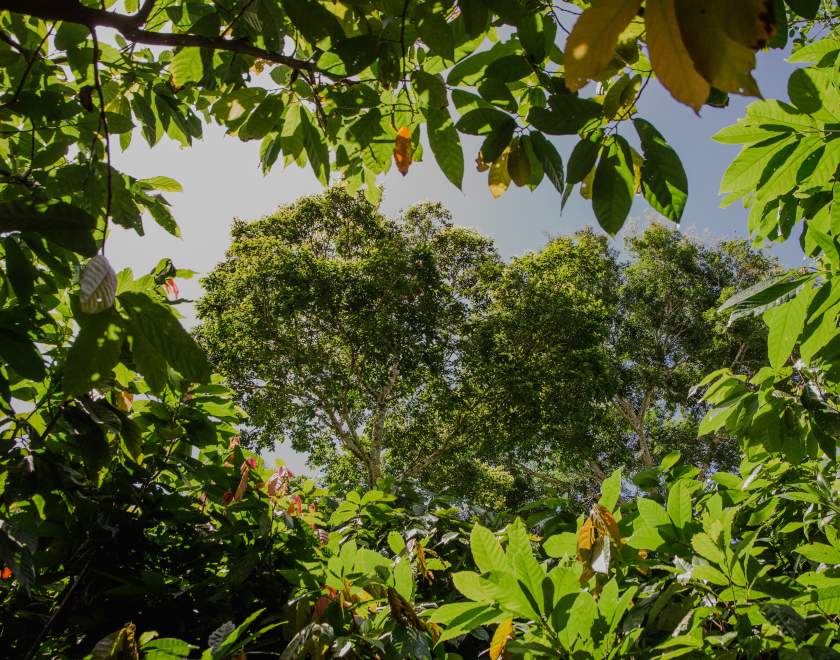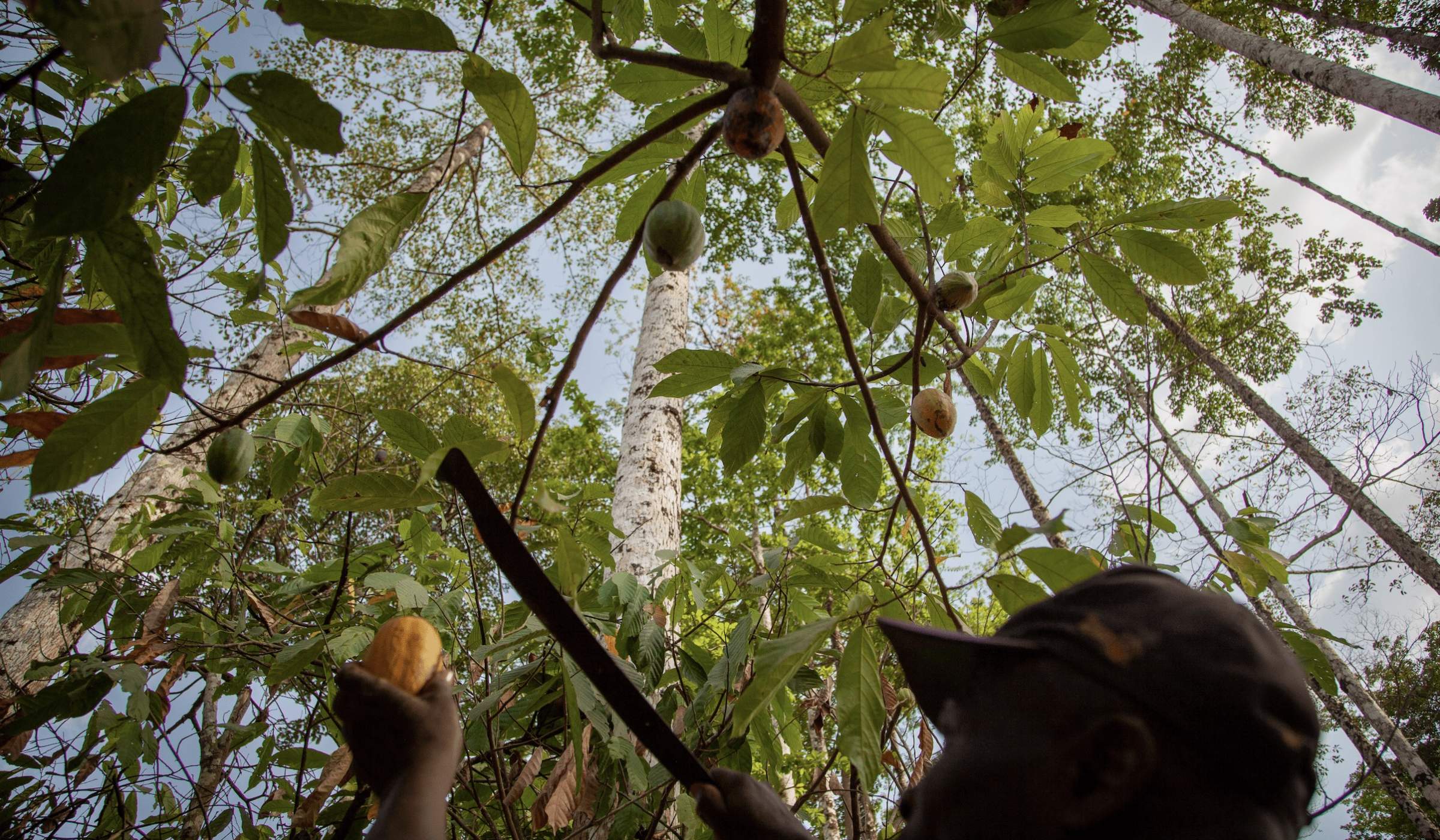
Learn the history of the WCF’s Cocoa and Forests Initiative and find out what is in store for phase two of the initiative from our Senior Director of Environment, Ethan Budiansky.
A Brief History of the Cocoa & Forests Initiative
In 2017 at COP27 in Bonn, Germany, leading cocoa and chocolate companies and the governments of Côte d’Ivoire and Ghana launched the Cocoa & Forests Initiative (CFI) with the signing of the joint Frameworks for Action. Facilitated by the World Cocoa Foundation (WCF) and the Sustainable Trade Initiative (IDH), CFI is an unprecedented collaboration between industry and governments to work together to eliminate deforestation and restore degraded forests in Côte d’Ivoire and Ghana. Based upon the core commitments, actions and timelines outlined in the Frameworks, both governments and each signatory company developed and published action plans which identified the actions and investments they will make to contribute towards the achievement of the CFI commitments.
What is CFI 2.0?
Over the past five years, signatory companies have made significant investments and progress on CFI commitments, particularly on traceability, the promotion of cocoa agroforestry, and farmer training which they report annually. Both companies and the governments agree that for CFI 2.0 (2023-2025), we must accelerate and scale impact on the ground by focusing on building collective action and co-investment in priority landscapes in addition to supply-chain investments that were the focus of CFI 1.0 (2018-2022).
The 36 CFI signatory companies have committed to developing new CFI action plans that will set their targets for 2023-2025 to be published in May 2023. These will align with the national implementation plans developed and adopted in Côte d’Ivoire and Ghana in 2022. The public disclosure of the company action plans in May is an important strategic and communication opportunity to bring to life the industry’s delivery of Cocoa & Forests Initiative (CFI) commitments over the next three years and reinforce their commitment to achieving CFI goals.
Q&A with Ethan Budiansky
Q: Why is cocoa-related deforestation still happening?
In 2017, companies and governments entered into this partnership to work together to end deforestation in the cocoa sector because we recognized that the drivers of deforestation are complex and require the collaboration of all key stakeholders to be able to make progress.
Since the launch of CFI, signatories have made significant investments towards eliminating deforestation. One of the priority actions is to improve traceability to the farm level in order to understand exactly where cocoa is coming from and proactively address risks of new deforestation. In 2021 alone, companies have mapped over 800,000 farms and have achieved 72% traceability in their direct supply chains Governments have put in place key policies and are developing national traceability systems to ensure that cocoa is traceable in the direct and indirect supply chains.
The reality is that a lot of the new deforestation that is happening is taking place in the unregulated, untraceable indirect supply chain which is why we need to prioritize implementing a national traceability system, coupled with a national satellite monitoring system with an alert system.
Moreover, in CFI 2.0, the companies and governments are collaborating on priority landscapes to conserve remaining forests and restore degraded area, thereby protecting biodiversity and ecosystem services, reducing and sequestering carbon, and establishing zero-deforestation landscapes.
Q: What have we learned about successful partnerships from CFI 1.0?
We established the Cocoa & Forests Initiative because we recognized the critical importance of tackling deforestation to ensure the sustainability of the cocoa sector; that the drivers are deforestation are extremely complex; and that no one actor in the cocoa supply chain can tackle it alone. CFI established the platform for governments and companies, and other key stakeholders to build collaboration based on trust, shared responsibility and accountability towards the elimination of deforestation. Building this trust and our joint collaboration in achieving CFI commitments has taken time and we have established a strong foundation of partnership which will now launch us into this new phase of CFI.
Q: What are the goals of CFI 2.0?
The goal of CFI 2.0 is to accelerate and scale impact on the ground towards the elimination of deforestation in Ghana and Côte d’Ivoire with a focus on the following key priorities.
- Prohibit and prevent activities that cause or contribute to any further deforestation or forest degradation in the cocoa sector;
- Respect the rights of cocoa farmers, including identifying and mitigating social risks, and sequencing the implementation of actions to minimize potential adverse social and economic impacts;
- Promote the effective restoration and long-term conservation of National Parks, Wildlife Sanctuaries, Wildlife Resource Reserves, Forest Reserves, and unprotected off-reserve forest lands;
- Strengthen supply chain mapping, with the end goal of full traceability at the farm level;
- Implement verifiable actions and timebound targets based on sound data, robust and credible methodologies, stakeholder consultation, and realistic timeframes;
- Implement agreed actions in the context of a broader landscape-level approach, with strong links with similar initiatives in other commodities, and full alignment with the national REDD+ strategy, new Ghana Cocoa Sector Development Strategy II, and other relevant national strategies and plans;
- Embrace shared responsibility to implement the Framework actions, including continued engagement in a multi-stakeholder process for dialogue on key issues, development of effective implementation plans, and joint learning and knowledge sharing; and
- Provide effective monitoring and reporting on progress on commitments and actions to ensure transparency and accountability.
We will continue to work with the governments to achieve these commitments, scaling up investments in company supply chains. Our aim for CFI 2.0 is to focus our efforts towards the conservation of forests and restoration of degraded landscapes in both Ghana and Côte d’Ivoire and to ensure there is alignment with the new EU Due Diligence legislation.
Q: Is it possible to end deforestation?
Yes, it is possible to end deforestation if we are able to get all the different stakeholders including government, industry, donors, NGOs and farmers to work together towards the common goal.

